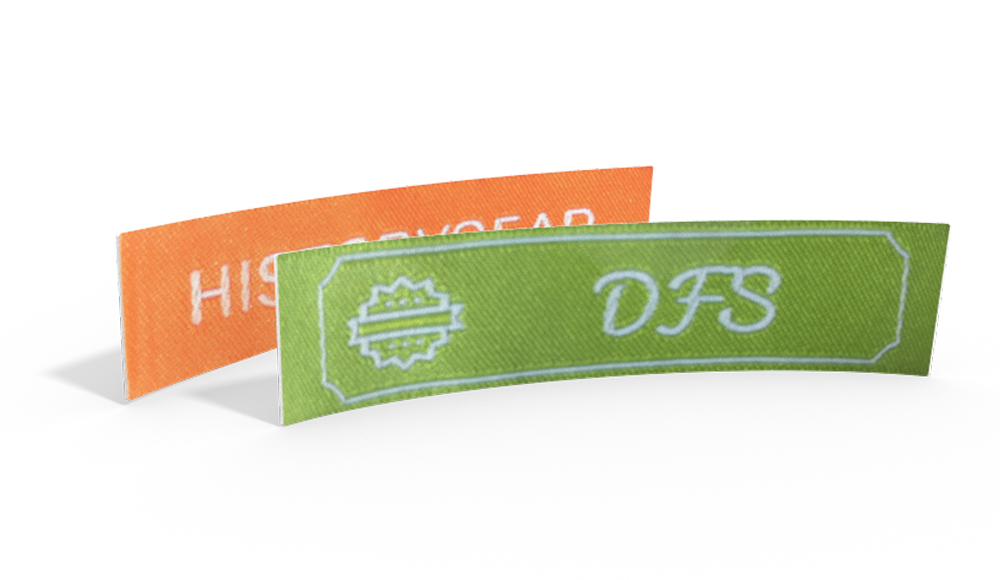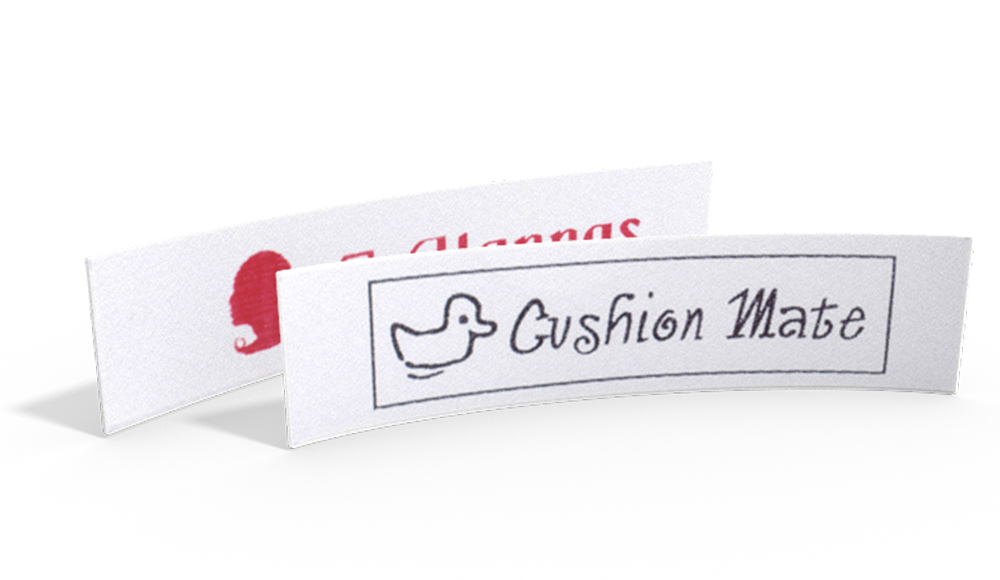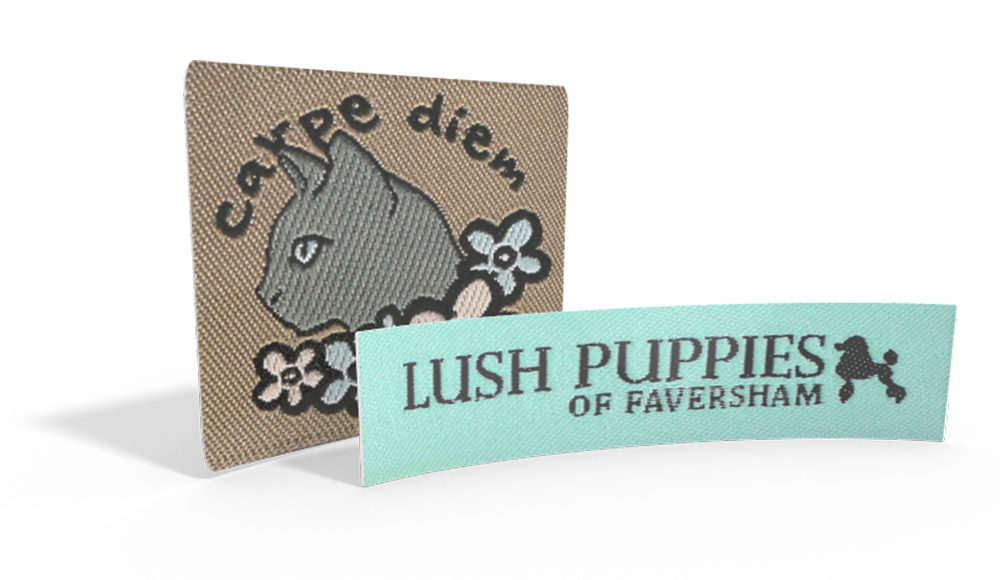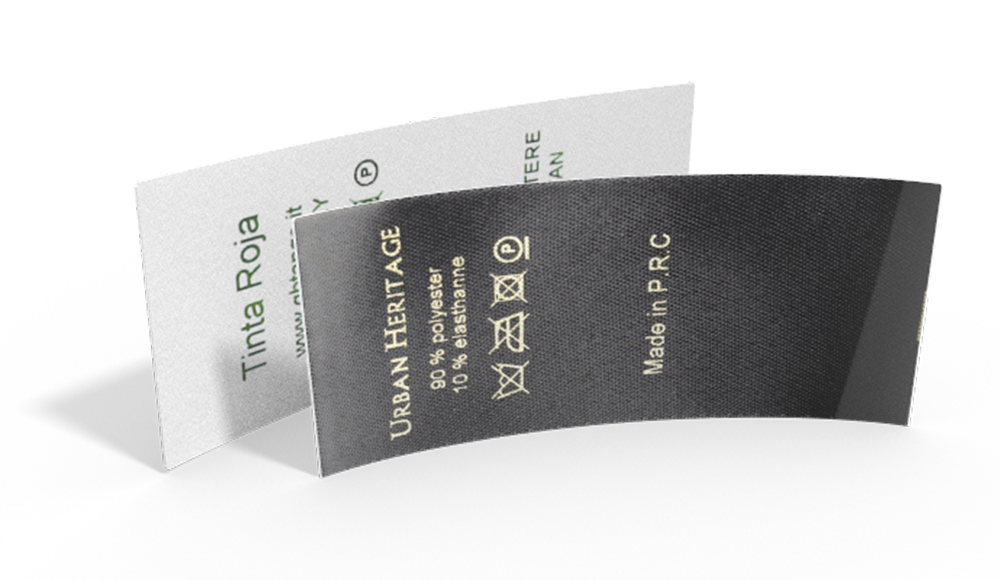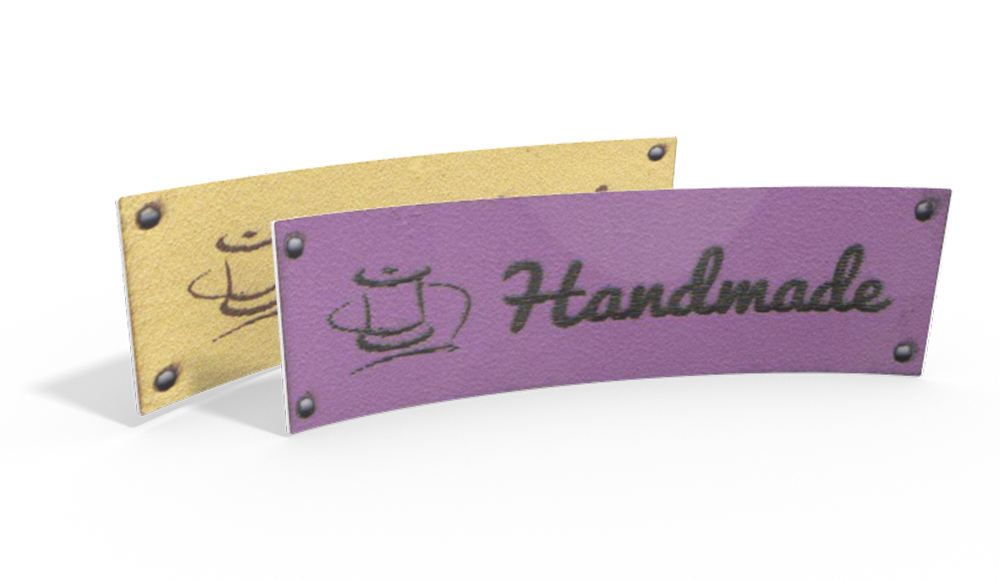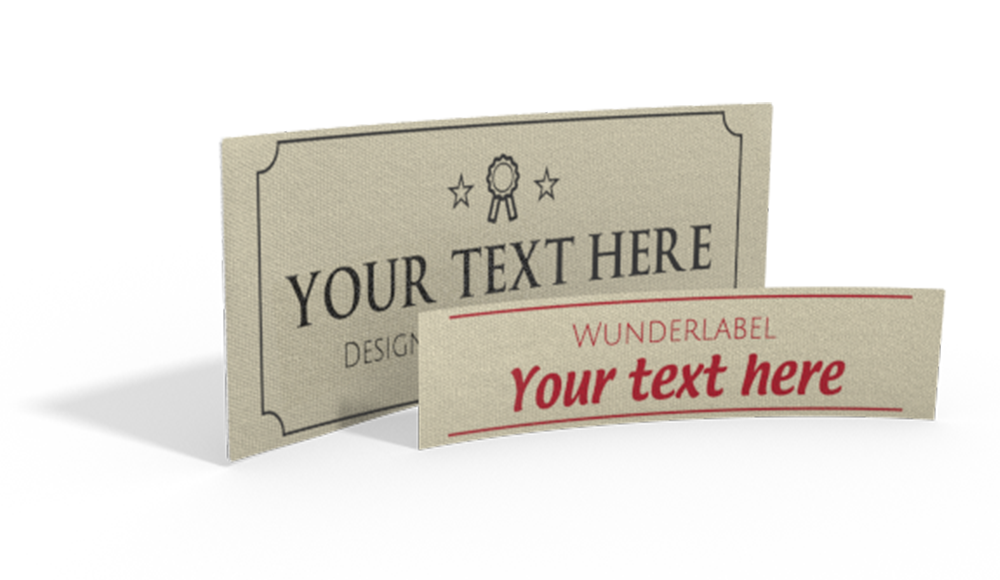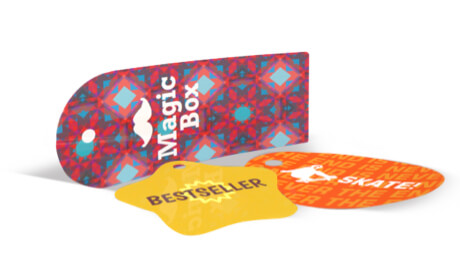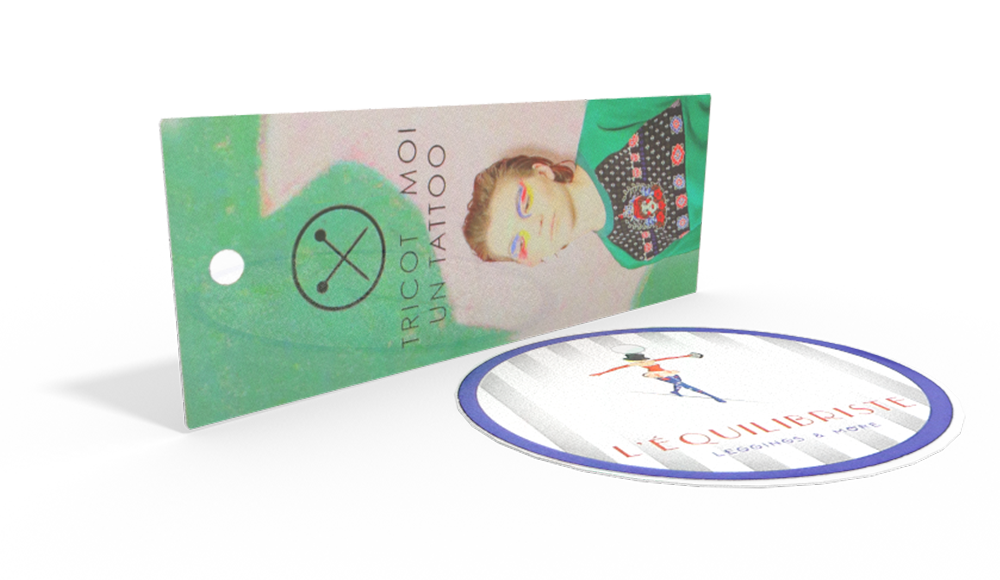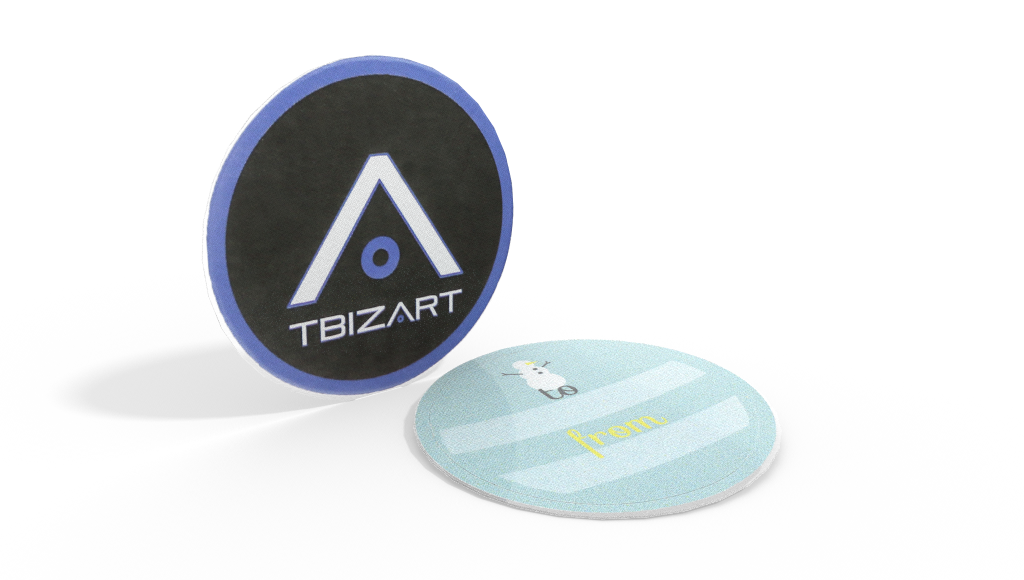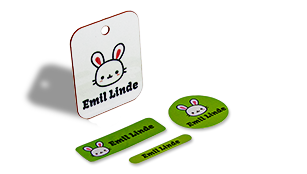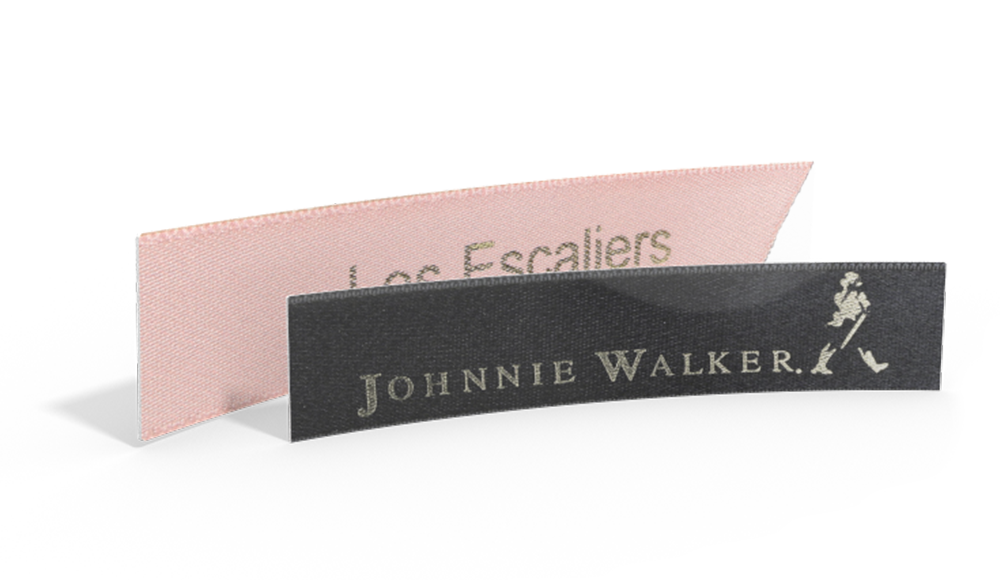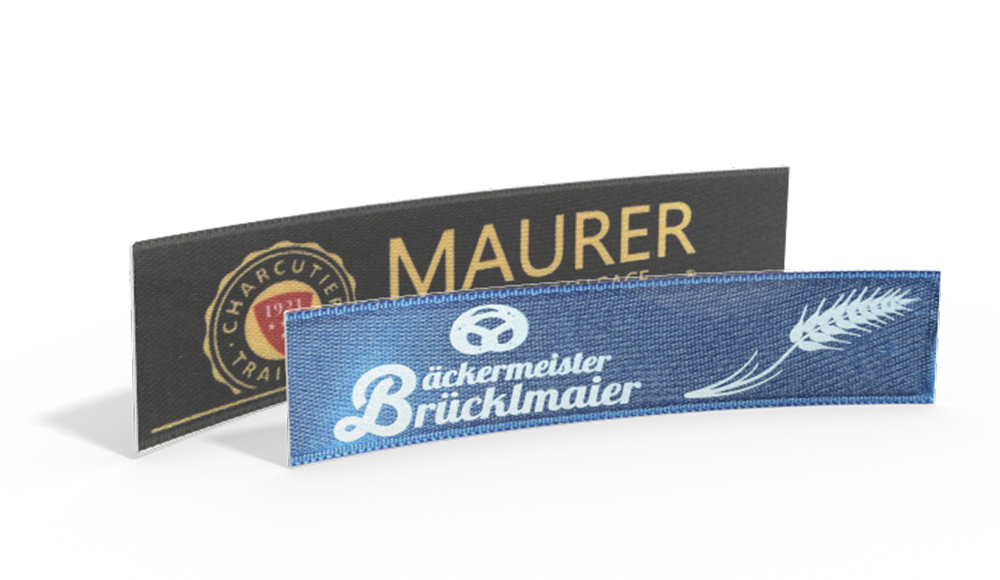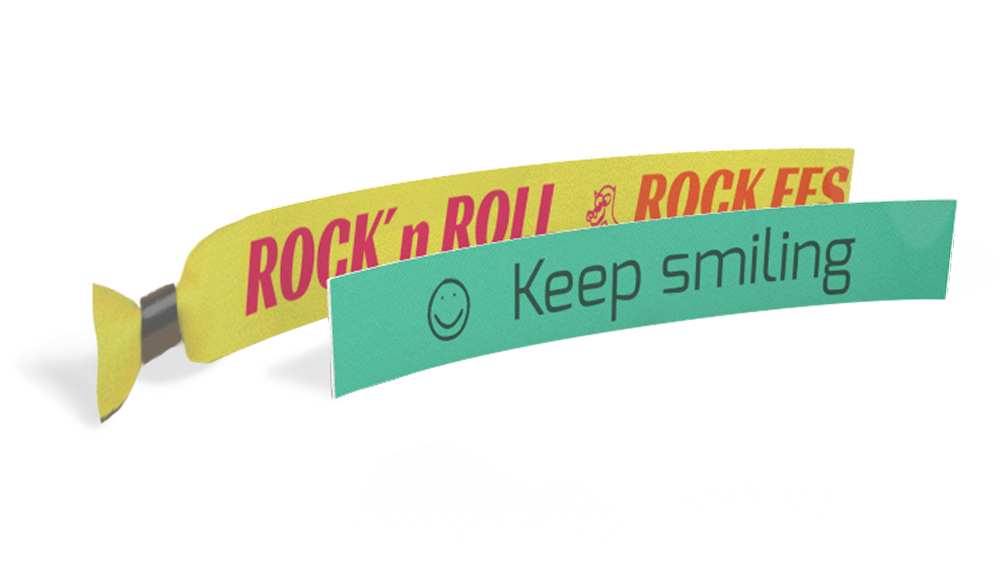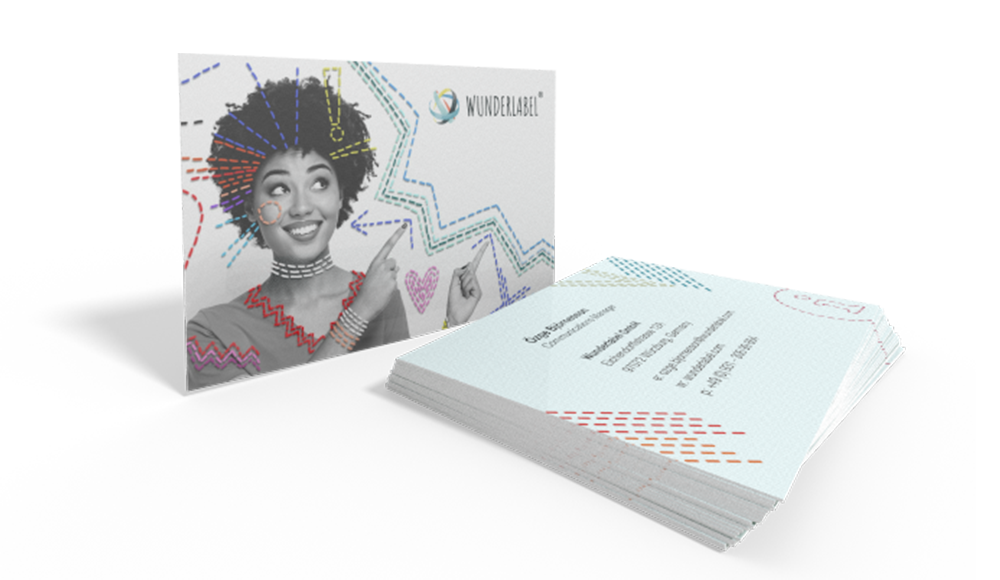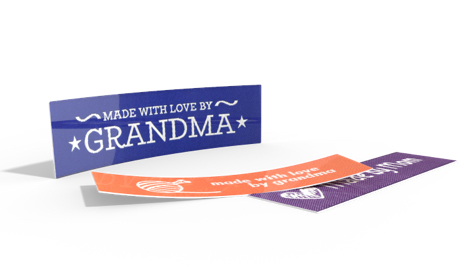Sequined fabric can add a bit of glitz and glamor to your sewing projects. Wether it's an applique on a skirt, a fun throw pillow, or a fully sequined dress the addition of your custom printed label can glam it up even more. But the fabric does have some quirks that can make it a little tricky to work with if you're not used to it. From choosing the right fabric and the right pattern to cutting out and stitching up your project, check out these pro tips for sewing with sequins!
1. What type of fabric are you using?
There are many different types of sequin fabric. Some materials have sequins stitched on in specific patterns, which can sometimes include lace or embroidery, beading, and other embellishments. Some types of fabric are stitched all over with sequins in more random patterns, while still others use glue to hold the sequins to the fabric. Each of these materials behaves slightly differently, though all of them should be handled with care to keep from damaging the sequins or the underlying fabric. When purchasing your fabric, pay attention to how the sequins are attached, as this will affect your work later.
2. Does your fabric have a nap?
"Nap" in fabric means whether is has a distinct directional pattern to the fibers, or, in this case, the embellishment. This is easiest to see on "mermaid" fabric. This material has rows of sequins loosely stitched on by one edge in a layered pattern, which resembles fish scales. These sequins are sometimes different colors on each side, so you can brush your hand across the fabric and change the color by changing the way the sequins are facing. If you don't want adjoining panels to be different colors, or have their sequins running in opposite directions, you'll want to be sure to consider this nap in laying out your pattern pieces.
3. Choose the right pattern
When you're creating clothes from sequin fabrics, you'll want to make sure that you're choosing patterns well suited to it. Lots of darts, pleats, or complex seam lines will be particularly tricky to work in sequins, and you may find that they make the finished garment look overly busy. Stick to clean, straight lines that will be easy to execute flawlessly and show off the sequins to their best. If you're not sure you want your garment to be made entirely of sequin material, consider using it as an accent, trim, or applique for a bold fashion statement without all the flash.
4. Mark your seam line
Sometimes in sewing, it's enough to know how wide your seam allowance should be and extrapolate your seam line from there. Basically, all you have to do is line up the edge of your fabric on the appropriate marker on your sewing machine and keep it there. With sequin fabric, though, you'll need to mark your stitch line as well. Working from the back of your fabric, trace the edge of your pattern and any other construction marks with tailor's chalk or disappearing ink. If your pattern already includes the seam allowance, you'll need to remove your pattern and mark your stitch line inside the line you've already traced. If you need to add your seam allowance, you'll need to measure out from the edge of the pattern and mark the edge of your seam allowance. Alternatively, you can mark both at once using a double tracing wheel, a handy little gadget used with tracing paper to mark out both your cutting and stitch lines at the same time.
5. Remove sequins when possible
The reason you want to mark the stitch line of your project is so that you can clear a path for your stitches. With the stitch line marked on the wrong side of your fabric, use a needle and contrasting thread to baste along the line. This will make it visible on the right side of your fabric in a way that's easy to remove before you actually start sewing.
With your stitch line marked, it's time to remove sequins. If they're sewn on, be sure to cut the sequins themselves and not the threads holding them in place unless you plan to remove an entire line of sequins. A fine, pointed pair of scissors and maybe even a pair of tweezers will come in handy for this kind of work. If your sequins are glued in place, do not try to remove them. Many are heat fused to the fibers beneath them, and trying to remove them will likely damage your material.
Clear a path along your stitch line, following your basting stitches. Once that's clear, move on to your seam allowances. Removing the sequins here will reduce bulk, make it easier to finish your edges if you so choose, and keep the insides of unlined garments from being scratchy.
6. Dealing with beads
Does your sequined embellishment include beads that might interfere with your stitching as well? Just like sequins, you'll need to remove them before you start sewing, and, also like sequins, you'll want to avoid cutting the threads holding them in place unless you intend to sew the rest of the beads back down by hand. Instead, lay your fabric on a hard surface, like a cutting board (put down a drop cloth if you're concerned about stains), and apply clear tape lightly to the beaded areas that need to be cleared. Use a small hammer to smash the beads, then gently remove the tape. The threads should remain intact, and the broken beads should come away attached to the tape.
7. Use dedicated scissors
An amazing pair of fabric scissors are one of a sewist's most precious possessions. Don't risk them on sequin material! Keep a pair of less stellar (and less expensive) scissors to use for cutting material with plastic embellishments, or other, non-fabric items you may need cut or trimmed. Replace or sharpen these scissors as they grow dull—while you don't want to use your finest scissors on plastic, dull scissors can cause damage to your material.
8. Cut one layer at a time
Sequins are slippery! When you're cutting out your pattern pieces, cut only one layer at a time. If your layout suggests cutting multiple pieces at once, remember to flip over those pattern pieces when cutting your second layer to account for the change. For best results, use pattern weights rather than pins, which can be tricky to negotiate in sequin material. Take care while cutting. Wayward sequins tend to fly up when cut.
9. Have extra needles handy
When you're sewing sequins, you're probably going to break needles. It's just a fact of the work. You can limit this, of course, by carefully removing sequins from your stitch line, but this isn't always possible. With glued-on sequins, you can't avoid stitching through them. For this kind of material, up your needle strength to a heavy duty or denim type needle, which is designed to punch through tough material. Even these needles can break, however, so be sure to keep a few extras on hand as you work. Stitch slowly, and keep an eye out for any bending or other malformation of your needle. Change it out promptly if you notice any damage.
10. Use caution when pressing!
Sequin fabrics are tough to press. Not only are they lumpy due to all the embellishment, but all that embellishment is easily meltable. Whenever possible, avoid pressing over your sequins, opting instead to finger press your seams. If you must press, use a low heat setting, a press cloth, and press from the wrong side of the fabric.
11. Handle touch-ups by hand
With all that removing of sequins, you may find your project has a few bald spots once you've finished assembly. Snip the threads securing sequins to a scrap of fabric and set aside the extra sequins. Once your project is finished, use these extras and hand-stitch them to your project to fill in any gaps. You can do the same with beading that might be stitched alongside your sequins. If your sequins are stitched to appliques, as is the case with some sheer special occasion fabrics (like tulle or chiffon), you'll want to remove any appliques that might overlap your stitch line. Set them aside and stitch them back down by hand once your seams are in place, overlapping your seam to match the layout of the appliques.
12. Care for your projects properly
Sequined materials are delicate. Whether the sequins are stitched on, glued on, or attached to appliques, they're not well suited to being tossed in the washer or dryer. Take careful note of the care instructions on the bolt of fabric when you purchase it. Some sequined fabrics can be hand washed—actually by hand, not on a "hand wash" setting in a machine—and drip-dried, but the majority will need to be dry cleaned. Don't try to avoid this, or you may find your washing machine filled with sequins and your carefully stitched project looking bald!

